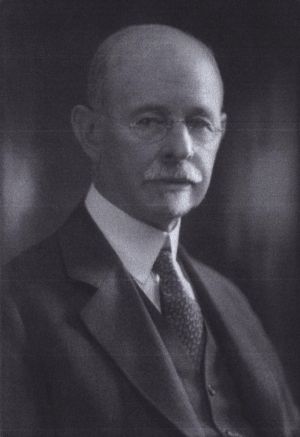
The following text was reproduced from the April, 1937 issue of Cornell University's Engineering magazine, The Transit By Kenneth B. Earnhardt and contributed by Theodore Towl of Pentwater, Michigan, grandson of F.M. Towl.
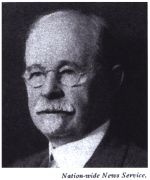 Forrest Milton Towl, Professor Cornell University, Initiated April 14, 1936, Cornell Chapter,
In recognition of his long service to those principles for which Chi Epsilon stands, the Cornell Chapter of Chi Epsilon, on April 7, 1936, elected Forrest Milton Towl to honorary chapter membership.
Forrest Milton Towl, Professor Cornell University, Initiated April 14, 1936, Cornell Chapter,
In recognition of his long service to those principles for which Chi Epsilon stands, the Cornell Chapter of Chi Epsilon, on April 7, 1936, elected Forrest Milton Towl to honorary chapter membership.
The biography of Mr. Towl would be more than a personal record, rather it would picture a half-century of the growth of his chosen profession.
He was born in Parma, Ohio, on January 14, 1863, the son of Theodore M. and Sarah L. (Ackley) Towl. It would seem that a tradition of engineering was his heritage since his paternal grandfather had been associated with the early highway work, and his maternal grandfather had assisted in the building of the Ohio canals.
Immediately after graduating from high school in 1879, he joined a survey party engaged in the subdivision of the Pennsylvania oil fields. He returned to Cleveland for a winter term at the Spencerian Business College, but in the spring he again entered the field, this time on the survey of a pipe line from Pennsylvania to the refinery at Cleveland. He remained in this work until September 1881, when he matriculated at Cornell University. The growing oil and gas industry still attracted him, however, so that while still a student he assisted his father in preparing the engineering estimates for the natural gas line from Northern Pennsylvania to Buffalo.
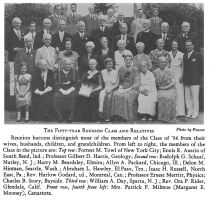
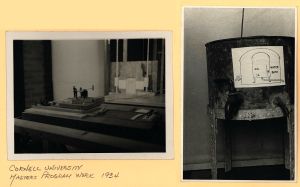
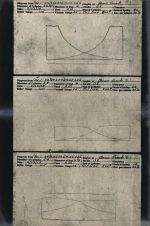
Forrest M. Towl's 1934 Masters project at Cornell University
In 1886 he graduated with the C. E. degree, and from that date until his retirement from active practice in 1932 he continued his pioneer work in pipe line engineering. He was ehgaged soon in original research on the flow of gas through pipe lines; from these tests were evolved many of the first formulas for the characteristics of such flow.
In 1902-03 he designed and built the first long pipe line for pumping viscous petroleum oil from Bakersfield, California, to the refinery at San Francisco Bay. It was based on the principle of increasing flow by reducing the viscosity with heat. At ground temperature, the line would handle only 900 barrels per day. By utilizing the exhaust steam of the pumps for heating the oil, the capacity was increased to 18,000, and later to 23,000 barrels per day.
Within a short time he brought his technical skill to various executive offices he was asked to assume. In these capacities he has contributed distinguished service to several of the country's leading petroleum organizations. He served as manager of the pipe line department, Pacific Coast Oil Company (now Standard Oil Company of California), and later as consulting engineer for the Standard Oil Company. From 1911-32 he was president, and since 1932, he has been chairman of the board of the Southern Pipe Line Company, Eureka Pipe Line Company, South West Pennsylvania Pipe Lines, and Cumberland Pipe Line Company.
His professional activities have not been limited to private enterprise alone. During the construetion of the Panama Canal, Mr. Towl was consulted on the plan for handling and storing oil at the canal. He was active, also, as a member of the fuel and fuel-handling subcommittee of the United States Navy. Then early in 1918, he went to England to confer with Admiral Sims and other Allied representatives in reference to a pipe line across Scotland to supply Allied navies with fuel oil. A recruited unit under his direction completed this project in sixty days.
In 1934 he published a book, The Pipe Line Flow Factor in the Hydraulic Formula, which he has distributed to educational institutions and to engineers. This led to his return to Cornell for further research on Specific Viscosity. He established two special scholarships for graduate students to assist him; these were awarded to Harold V. Hawkins and Arthur V. Peterson, who were elected with him to Chi Epsilon.
In June, 1935, after a half-century of active engineering work, Mr. Towl received the degree of Master of Civil Engineering from his Alma Mater.
His professional associations are extensive, including membership in Am. Soc. C. E.; Am. Soc. M. E.; Am. Inst. Mining and Metal. Engr.; Cornell Soc. Engr.; and fellow, Am. Assoc. for Advancement of Science.
He and Mrs. Towl (Mary E. Dean) live in Brooklyn, N. Y., and Dering Harbor, N. Y., although his work calls him to Ithaca frequently. There are two children living: Theodore Clinton and Sarah Dean; and Forrest Milton, Jr., (deceased).
Obituary - As published in the Brooklyn Eagle, Fri, Jan 4, 1946
 Forrest M. Towl, Petroleum Expert
Forrest M. Towl, Petroleum Expert
Forrest Milton Towl. a pioneer oil pipeline expert, former chairman of the board of the Southern Pipe Line Company and other pipeline concerns, died yesterday at bis home. 45 Montgomery Place. He was 81
Mr. Towl. a native of Parma, Ohio, was graduated from Cornell University in 1886 as a civil engineer. After working for the National Transit Company and other subsidiaries of the Standard Oil Company, he was transferred in 1902 to the Pacific Coast Oil Company. Then he served as president of various subsidiaries of Standard Oil.
Under a method devised by Mr. Towl the capacity of hot oil pipe lines was greatly expanded. In World War I he directed construction of a pipe line made necessary by U-boat sinkings of tankers.
Recently Mr. Towl had been doing research work at Cornell. He was associate editor of Day's Handbook of the Petroleum Industry and had written extensively on petroleum transportation.
Mr. Towl also had served as president of the Eureka Pipe Line Company and the South West Pennsylvania Pipe Lines. He was a member of the American Society of Mechanical Engineers and the American Society of Civil Engineers.
Surviving are his widow, Mis. Mary Elizabeth Towl. a son, Theodore C Towl; a daughter, Mrs. Sarah D. Plumb, and two brothers. Allan T. and Burr A. Towl.
Slide Rules

Insert from 1910 Air and Gas Instruction Manual

42 inch long Oil Piping Slide Rule, 1889


16 inch long Oil Piping Slide Rule, Copyright 1889; 16 inch long Oil and Gas Piping Slide Rule, Copyright 1889


16 inch Air and Gas Pipe Line Flow Slide Rule, copyright 1910 Instruction Manual, Copyright 1910
Papers, Books, News, Honorable Mentions
1911
 Pdf Pdf
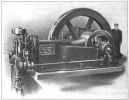 85 HP Motor 85 HP Motor
Forrest M. Towl - Test Of 85HP Motor, Published in ASME Journal, 1911.
The paper describes test of DeLaVergne oil engine, FH type, operating
an oil pump, and one of the same engine under the same conditions but with
the load applied by prony brake instead of pump. The object of the test
was to find the friction of the pump and gearing and the efficiency of the plant.
Data of test and results of computations are given. The pump and transmis
sion efficiency were 92.1 per cent, the total station efficiency, 25.52 per cent,
and the duty per 1,000,000 B.t.u., 198,664,000.
1913


 Featured article on Forrest Milton Towl, C.E. Class of '86, by The Cornell Civil Engineer, October 1913
Featured article on Forrest Milton Towl, C.E. Class of '86, by The Cornell Civil Engineer, October 1913
Forrest Milton Towl was born in Parma Township, Cuyahoga County, Ohio, on January 14, 1863. He graduated from the Brooklyn Village, O., High School in June, 1879, and during that summer and fall worked as rodman and chainman on land surveys in the northern Pennsylvania oil fields.
In the spring of 1880 Mr. Towl worked as chainman on the survey of the first trunk pipe line built between the Pennsylvania oil regions and Cleveland, O., and early in July of that year commenced work on surveys of the pipe lines from the Pennsylvania oil regions to New York and Philadelphia, working as chainman until September, 1881, when he entered Cornell University. During each summer vacation from that time until graduation in 1886, he was engaged on surveys of various pipe lines and work connected with the natural gas industry.
On graduation Mr. Towl entered the Engineering Department of the National Transit Company and was engaged in that Department, first as an assistant and then as Chief Engineer, until 1902, when he was sent to California to build a pipe line from Bakersfield to San Francisco Bay, with the title of Manager of the Pipe Line Department of the Pacific Coast Oil Company, (now the Standard Oil Company of California). This was the first long line built for handling viscous oils. The oils were pumped hot which method is used by all long lines now handling the thick heavy oils. On the completion of this work in 1903, he was appointed General Superintendent of the trunk pipe lines controlled by the Standard Oil Company. In 1906 he resigned the position of General Superintendent to become Consulting Engineer of the Standard Oil Company and remained in that position until the dissolution in December, 1911, when he was elected President of the Southern Pipe Line Company, South West Pennsylvania Pipe Lines, The Eureka Pipe Line Company and the Cumberland Pipe Line Company, Incorporated. This group of four lines forms a continuous pipe line system from Kentucky through West Virginia and Pennsylvania to Pittsburgh and Philadelphia. In addition to building the Pacific Coast Oil Company's pipe line, Mr. Towl built the trunk line of the Prairie Oil & Gas Company from southeastern Kansas to near Whiting, Indiana, and also a line across Ohio and Pennsylvania to the Delaware River. In 1909 he built the pipe line of the Standard Oil Company of Louisiana. In all, he has had charge of building about 7,000 miles of pipe line averaging larger than 8" in diameter.
Since graduation, he has been interested in the engineering problems in connection with the transportation of natural gas and until the dissolution of the Standard Oil Company, had charge of most of the engineering and experimental work of the gas companies associated with that Company.
In 1911, Mr. Towl was appointed Honorary Lecturer in Mechanical Engineering in Columbia University and has lectured on the measurement and transportation of natural gas and air In the course in Applied Thermodynamics of Air Compression.
In October, 1913, he was requested by the United States Government to visit the Panama Canal Zone, and spent three weeks there advising with the Engineers in reference to plans for furnishing fuel oil to the ships which will use the canal.
|
1915

 Forrest M. Towl mentioned in The Transactions Of The International Engeneering Congress - PanamaCanal 1915, Page 432. on the chapter titled: TERMINAL WORKS, DRY DOCKS AND WHARVES
Forrest M. Towl mentioned in The Transactions Of The International Engeneering Congress - PanamaCanal 1915, Page 432. on the chapter titled: TERMINAL WORKS, DRY DOCKS AND WHARVES
... tanks that will enable about 150,000 tons of fuel to be carried in stock on the Isthmus, and there is ample room for the construction of additional storage tanks should they be necessary. The Panama Canal owns four 40,000-barrel tanks, two at each end.
The oil lines in general have been laid on the ground, and. by providing expansion joints at intervals, no special difficulties have been experienced by the pipes pulling apart or by leaky joints arising from variation in temperature. The oil purchased and stored by the Panama Canal under its present contract is California oil. On the completion of tanks which are now under construction, vessels passing through the Canal will be able to purchase California, Mexican and Oklahoma oils.
These plants were designed and constructed by the Division of Terminal Construction. Mr. F. C. Nichols, Assistant Engineer, was in charge of the designing and office work, and acted as inspector on construction work performed by other divisions. Prior to his connection with the work, Mr. A. L. Bell, Mechanical Engineer, performed important work in connection with preliminary investigations and calculations. Valuable information and assistance were received from engineers of the manufacturers of pumps, and of the handlers of oil. Special acknowledgment is due to Mr. Forrest M. Towl, M. Am. Soc. C. E., for information and suggestions offered.
The writer desires to make acknowledgment for the faithful services rendered and loyal support given by all who were associated with him on the foregoing work.
1917

 Forrest M. Towl mentioned in Petroleum Age - Oil and Gas Securities March 1917, Page 22 .
Forrest M. Towl mentioned in Petroleum Age - Oil and Gas Securities March 1917, Page 22 .
When the United States goes on a war footing, the effect can not but be stimulating to the oil industry. Assistant Secretary of the Navy Franklin D. Roosevelt, in an address before the American Mining Congress last November, stated that the navy's fuel oil needs in the fiscal year ending June 30. 1917, would be 1,175,000 barrels. This was on a
peace footing.
With war declared and with all of the lighter vessels (all of which are oil burners) on constant patrol duty, the navy's consumption of oil doubtless will be doubled. At the present time the consumption runs around 175.000 gallons of fuel oil daily and from the moment hostilities are declared the demand will mount upwards until navy consumption probably will reach 250,000 gallons daily.
While these figures seem large, they are in a comparative sense but an insignificant fraction of the daily output of the industry. Anyone of the half dozen companies that are now supplying the navy's fuel requirements could take care of the entire contract single handed. The only difficulty is that current demand for fuel oil is running so far ahead of facilities for delivery that the government's entering the market for increased amounts, will have a tendency to stimulate prices further. It goes without saying, however, that the government will get its additional supplies under existing contract prices, which already are less than half of the current market quotations.
Two hundred and fifty thousand gallons of fuel oil daily is a little more than 6,000 barrels and it would require only slightly more than l0,000 barrels of crude oil to produce this amount. This is hardly 1.25% per cent, of the country's total daily output.
Standard Oil Company of New Jersey. The Texas Company. Standard Oil Company of New York, the Gulf Company, Standard Oil Company, California, and the Union Oil Company are the largest suppliers of fuel oil to the government storage installations at Atlantic and Pacific ports. With their extensive fleets of tankships these companies are in position to attend to the navy's requirements.
All and each of these companies will be eager to render patriotic service by thorough co-operttion with the Navy Department. No doubt the government will call in experienced oil men to assist the naval experts in handling the problem of fuel supply. The government lias occasion to know that it can commend the best talent in the oil industry fur patriotic purposes. When the problem of constructing a pipe line system and chain of storage installations along the Panama Canal came up only a few years ago, Forrest M. Towl, president of the Southern group of Standard pipe lines and the foremost pipe line engineer of the country, gave the government the benefit of his advice and co-operation.
|




 Descriptions of Oil and Pipeline company financials that show Forrest M. Towl as President (and Director) of the Cumberland Pipe Line Company, Eureka Pipe Line Company, Southern Pipe Line Company, and the South West Pennsylvania Pipe Line on pages 29, 35 and 36 of The Oil Age, Published by Charles A. Stoneham &Co., March 1917
Descriptions of Oil and Pipeline company financials that show Forrest M. Towl as President (and Director) of the Cumberland Pipe Line Company, Eureka Pipe Line Company, Southern Pipe Line Company, and the South West Pennsylvania Pipe Line on pages 29, 35 and 36 of The Oil Age, Published by Charles A. Stoneham &Co., March 1917
|
CUMBERLAND PIPE LINE CO.
Authorised capital, 10,000 shares. Outstanding capital, 10,000 shares. Par, $100. Annual Dividend Rate, $5. Officers, Forrest M. Towl, president; John Bahan, vice-president; E. R. Shepard, secretary and treasurer; C, A. McLouth, assistant secretary and treasurer. Main Office, Oil City, Pa.
Profits of the Cumberland Pipe Line Co. in 1916 make a spectacular exhibit beside those of the previous year, being more than five and one-half times as large as they were in 1915. For the year closing December 31, 1916, the company earned $179,366, being 17.93% on its capitalization, as compared with 3.20% in 1915. During 1914 the company ran $18,312 behind its dividend requirements of $50,000 annually, and in 1915, its deficit was $17,999. But in the year just closed it earned more than three and one-half times its dividend, and brought up its profit and loss surplus to $256,960. It is evident, from the fact that the plant valuation of $1,529,812, as against $1,212,447 at the end of 1915, that the company has been turning back its surplus earnings into permanent betterments, which explains the small cash item of $25,655 at the close of the year.
The increase in the earnings of the Cumberland company is due to the vigorous development of the Kentucky fields, and the increased production of the state. The company owns 256.750 barrels of iron tankage, four main line pumping stations, 18 local pumping stations, and 467 miles of pipe line. Production of the various counties of Kentucky tapped by the Cumberland company is delivered to the Eureka Pipe Line Co.
EUREKA PIPE LINE CO.
Authorised capital, 50,000 shares. Outstanding capital, 50.000 shares. Par, $100. Annual Dividend Rate, $30. Officers, Forrest M. Towl, president; H. L. Scr&fford, W. J. Alexander, vice-presidents; E. R. Shepard, secretary and treasurer. Main Office, 210 Seneca St., Oil City, Pa.
Earnings of the Eureka Pipe Line Co. in 1916 were not only sufficient to meet dividend requirements, but to show a surplus, as compared with a deficit for several years past. The profits of $1,322,069 in 1916. compare with $992,247 earned in 1915 and against dividend needs of $1,200,004. The 1916 profits were equivalent to 26.44% on the company's $5,000,000 capital stock, whereas 19.84% was earned in the previous year. The balance sheet shows total assets and liabilities of $11,939,182, as compared with $11,155,933 at the close of 1915. During the year the company increased its investment account from $829,313 to $1,124,412, although its cash account declined from $583,499 to $446,550. Profit and loss surplus, however, gained about $120,000, to $4,553,887. During the year a contingency fund of $337,508 was created.
Because of the fact that the Eureka Pipe Line Co. reaches into practically all the West Virginia fields, where there was unusual activity and expansion in 1916, the increase in the earnings of the company is readily explained, and indicate that a further expansion may he looked for during 1917. The company is also benefiting in its interstate business, partly through handling more Kentucky oil. The company's lines connect with the South West Pennsylvania Pipe Lines and the Southern Pipe Line Co.
SOUTHERN PIPE LINE CO.
Authorised capital, 100.000 shares. Outstandmg capital, 100,000 shares. Par, $100. Annual Dividend Rate, $24. Officers, Forrest M. Towl, president; J. W. Vandergrift, vice-president; E. R. Shepard, secretory and treasurer; C. E. Shane, assistant secretary and treasurer. Directors, F. M. Towl, J. W. Vandergrift, C. A. Me Louth, C. E. Shane, H. C. Dorworth. Main Office, Oil City, Pa.
Like other pipe line companies, the Southern Pipe Line showed an increase in earnings for 1916 over those of the previous year, being $2,354,371, against $1,966,756 in 1915. The year's operations, after the payment of $2,399,998 in dividends, left a deficit of $45,627. It is probable that the 1917 earnings will be more than sufficient to meet dividend requirements. The company at the end of the year reported profit and loss surplus of $2,591,088, after writing off $1,141,431 for depreciation. Total assets and liabilities at the close of the year were $13,746,251.
The Southern Pipe Line Co. owns and operates 1,130 miles of pipe lines and four pumping stations, the main pipe line of 261 miles in length extending from Morgantown, Fayette County, Pa. to Philadelphia, being a connection with the western terminus of the Eureka Pipe Line Co. to the Philadelphia refineries. One of the chief assets of the company is somewhat in excess of $7,000,000 invested in sound securities and representing 70% of the par of its capital stock.
SOUTH WEST PENNSYLVANIA PIPE LINES
Authorised capital, 250,000 shares. Par, $100. Annual Dividend Rate, $12 Officers, Forrest M, Towl, president; R. G. Wright, vice-president; E. R. Shepard, secretary and treasurer. Directors, Officials, B. A. Whipple, J. F. Connors. Main Office, 210 Seneca St., Oil City, Pa.
Earnings of $456,358 of the South West rennsylvania Pipe Lines for the year ended December 31, 1916 represents a material improvement over those of the previous year of $316,453. The 1916 earnings were equivalent to 13.03% on the capital stock, as compared with 9.89% earned in 1915. After deducting dividends paid during the year the company was enabled to carry $36,359 to its surplus account, which was in sharp contrast to the deficit of $73,546 in 1915.
The balance sheet of the company, as of December 31, 1916, showed a profit and loss surplus of $1,049,351, a slight increase over the previous year. The company's cash account showed an increase of about $72,500, while the investment account gained from $985,329 at the close of 1915 to $1,219,891 at the end of 1916.
It is evident from the report that like the other pipe lines the South West Pennsylvania is profiting substantially from the increased transportation of petroleum products. The South West Pennsylvania Pipe Line owns and operates 1,646 miles of pipe lines, of which 422 miles are trunk lines. It also operates three trunk line pumping stations and 33 local pumping stations. The company also owns iron tankage, having a capacity of 1,472,000 barrels. The company's operations are conducted in Pennsylvania, being a link in the main trunk lines as well as a gatherer of oil. The company receives oil from the Buckeye Pipe Line, Eureka Pipe Line, National Transit Co. and the Ohio Oil Co. Practically all of the oil received by the South West Pennsylvania is delivered to other transportation companies. The company delivers between 12,000,000 and 15,000,000 barrels of oil annually.
|
1919

 Venango County, Pennsylvania: Her Pioneers and People, Embracing a General History of the County, and a Genealogical and Biographical Record of Representative Families by Charles Almanzo Babcock - January 1, 1919 Published by J. H. Beers. Mentions Forrest M. Towl on page 167 along with his son Theodore Towl. An Excerpt follows:
Venango County, Pennsylvania: Her Pioneers and People, Embracing a General History of the County, and a Genealogical and Biographical Record of Representative Families by Charles Almanzo Babcock - January 1, 1919 Published by J. H. Beers. Mentions Forrest M. Towl on page 167 along with his son Theodore Towl. An Excerpt follows:
Forrest M. Towl. head of the Southern Croup of Pipe lines. Standard Oil Company subsidiaries, was asked to send an expert to France to consult with the Lords of the Admiralty of England and other Allies of America regarding the feasibility of constructing and operating such an oil carrying line. He went himself early last May. It was suggested to him several weeks would be required to complete arrangements and contracts, but his answer, in effect, was characteristic: 'We do not build pipe lines that way in America.' All the routine of 'red tape' was eliminated and in three days he had shown how the line could be built and had all the contracts signed up. Then he sent a cable message to the National Transit Company ordering pipe line construction equipment sufficient for two full gangs sent to New York. The best in stock was selected, the railroad company furnished a Special express car. the material was loaded and one of the trusted men of the company was put in charge of the car. which, leaving here at 5 o'clock in the afternoon, was landed in New York at 11 o'clock the following morning.
"Theodore Towl, a son of Forrest M. Towl. wis assigned the important duty of getting the construction gang together. Among the cantonments in New York and vicinity he found among those in training eighty men who were skilled in pipe line construction, who were selected both for their experience and trustworthiness, and men of similar qualifications were selected from the best men in the employ of the Prairie. Tidewater and other pipe line subsidiaries of Standard Oil to add to the selected soldiers, making a party of one hundred and fifty men.
"Eight-inch pipe of the highest grade was as quickly brought to the seaboard and within three months the line was completed and was in operation, supplying the big warships and smaller craft with fuel.
|
1943
 ƒ1 The Pipe Line Flow Constant 0.0288,
ƒ1 The Pipe Line Flow Constant 0.0288,
ƒ The Pipe Line Flow Factor, Their relation to Density, Gravity, Velocity, Viscosity and the Reynolds Number, by Forrest M. Towl 1943. His 1889 slide rule is mentioned on page 34 and page 40 in the text as part of performing the calculations described therein. (Complete book 110 pages, 11MB PDF)
|
Other data found:
- Elected to the American Society of Civil Engineers in 1896. Proceedings of the American Society of Civil Engineers, Volume 22, 1896
- New York Times, 13 June 1909
- Cornell Alumni News, Vol.XIII. No.38, June 28, 1911, p.451. 5.25MB PDF
- New York Times, 8 December 1917
- New York Times, 2 September 1921
- The Pipe Line Flow Factor, Brooklyn 1934.
-
Copyright © 2003-2015
International Slide Rule Museum
|
|















 Pdf
Pdf 85 HP Motor
85 HP Motor















